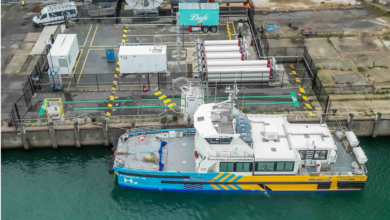HyPoint says biofuel does not solve zero-emission aviation
There are also many limitations to Li-ion, especially for heavy vehicles and high-frequency use cases.

Hydrogen-powered commercial aviation is technically feasible, and the technology is already under development. Current (low-temperature) hydrogen fuel cell technology is limited because it uses heavy liquid to cool the fuel cells, which adds mass and reduces the possible energy per kilogram. The next generation of hydrogen fuel cells will be high temperature and turbo air-cooled, which dramatically increases the possible energy per kilogram, making it attractive compared with any existing fuel, not least because it is zero-emission and it can be infinitely renewed when used in conjunction with solar/wind electrolysis. Hydrogen fuel will require capital investment in infrastructure, including fuel pipelines for transport or, ideally, onsite fuel manufacturing and storing with solar/wind electrolysis.
Currently, flying planes on hydrogen, even if the technology is ready, would result in high operating costs for airlines operators. Indeed, green hydrogen cost per kilometre would be highly uncompetitive against fossil fuel or even biofuel.
Dr Alex Ivanenko, the co-founder and CEO of HyPoint, told H2Bulletin, “A century ago, we built a massive infrastructure — and the global economy — on oil and gas, to the extreme degradation of our environment, and now we must endeavour to do the same with zero-emission hydrogen.”
Dr Ivanenko further added that HyPoint supports the United Nations’ Green Hydrogen Catapult initiative, which is working to make hydrogen more competitive by bringing the cost down to below $2/kg by 2025. This radical transformation of our fossil fuel-based economy is not only inevitable, but it is happening very quickly, and we expect prices for hydrogen to drop rapidly.
He explained, “Our analysis reveals that our hydrogen fuel cell system can achieve up to a 50% reduction in the total cost of ownership when compared with existing power sources.” This is based on HyPoint current strategy, which includes retrofitting existing aircraft and partnering with aircraft companies as they design new hydrogen-first aircraft.
“Biofuel, while a better and less carbon-emitting alternative to fossil fuels, does not solve zero-emission aviation and therefore cannot solve the climate crisis as efficiently as hydrogen,” he pointed out.
There is a global trend towards electrifying air transport and reducing noise. Biofuel cannot support electrification because it requires the same combustion processes as in fossil fuel-powered combustion engines.
H2Bulletin noted that there are many limitations to Li-ion, especially for heavy vehicles, long-distance hauls, or high-frequency use cases (e.g. air taxi sharing), all of which require specific power and energy density than Li-ion cannot deliver. “However, we believe that Li-ion (such as Tesla batteries) makes sense for some short-distance urban air mobility and/or private use use cases,” he said.
Mr Ivanenko described that the HyPoint approach to high-temperature PEM hydrogen fuel cells, based on another membrane chemistry, is radically different from anything else on the market because it utilises an industry-first “turbo” air-cooling method for circulating pressurised air — rather than heavy liquid — which dramatically reduces its overall weight. As a result, our hydrogen fuel cells can deliver significantly greater specific power and energy density, which means it can support larger vehicles across longer distances, all at a lower total cost of ownership.
HyPoint has recently revealed its first functional prototype turbo air-cooled hydrogen fuel cell system. The company plans to start commercialising the full-scale version next year in California.
This is part 5 of a 6-part series on hydrogen in the aviation sector that will run every Friday. If you have any questions or want to share your views, please feel free to contact us at editor@h2bulletin.com or +44 (0) 208 123 7812
